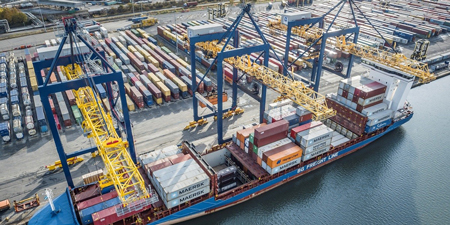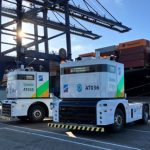The UK’s third largest ports group, Forth Ports, has outlined its commitment and the actions it is taking to achieve a Net Zero carbon operation by 2042.
 The company, which is Scotland’s biggest port operator, also outlined an interim target of achieving carbon neutral emissions (Scope 1 and 2) by 2032, while creating an infrastructure platform to help accelerate the UK’s path to a decarbonised economy.
The company, which is Scotland’s biggest port operator, also outlined an interim target of achieving carbon neutral emissions (Scope 1 and 2) by 2032, while creating an infrastructure platform to help accelerate the UK’s path to a decarbonised economy.
To achieve this across the group’s eight ports, the team is overhauling and electrifying equipment and machinery, switching to low carbon fuels, increasing on-site renewable energy generation and promoting low carbon delivery alternatives such as rail and barge. This is complemented by very significant investment in new port infrastructure to support the offshore wind revolution taking place in the North Sea.
Forth Ports is part of the Thames Freeport and Forth Green Freeport* partnerships which are seeking to accelerate the drive to Net Zero across the country.
Sustainable electricity – all eight ports use environmentally sustainable sources of electricity, including on-site wind turbines at Tilbury, London’s major port. All new warehouses will have solar roof panels installed as standard, such as the recently built 100,000 square foot facility at the Port of Grangemouth freight hub. These projects are already satisfying a meaningful proportion of the ports’ power needs. A programme of rolling out new LED lighting is under way to further reduce power use across all port estates.
Low carbon fuels – for mobile equipment and marine fleet, the strategy is to blend and utilise alternative fuels. Initially this involves the widespread use of sustainably sourced hydrogenated vegetable oil (HVO) and, as technology develops, other methods of low emission propulsion. An ongoing programme exists to introduce more fuel-efficient equipment and marine fleet across the asset base. Read more from: www.Forthports.co.uk















